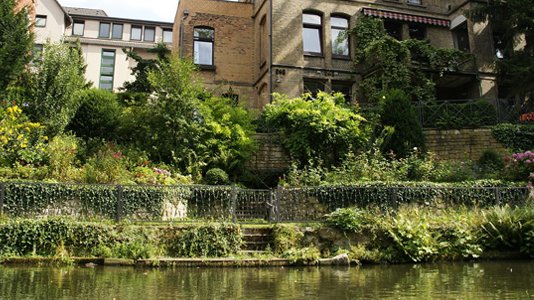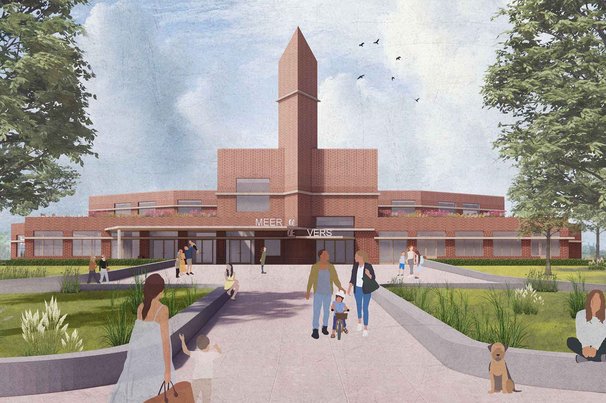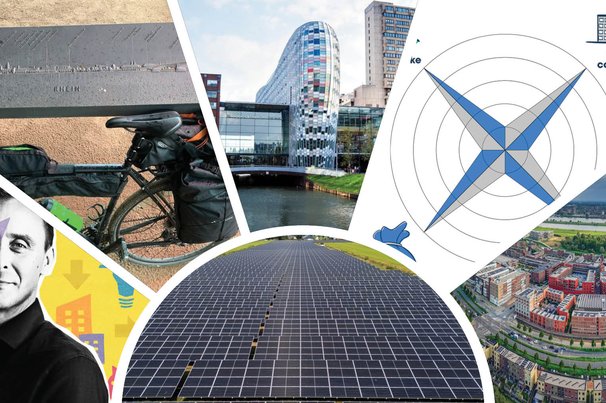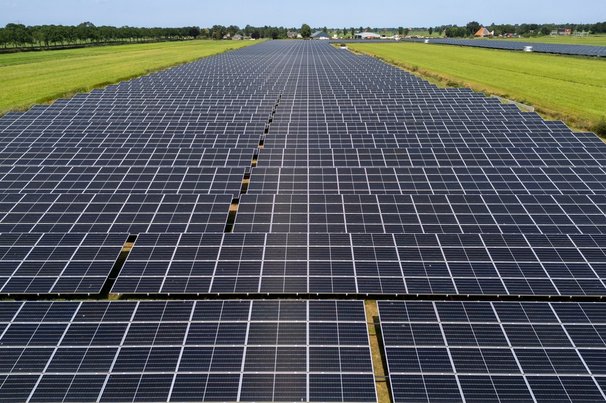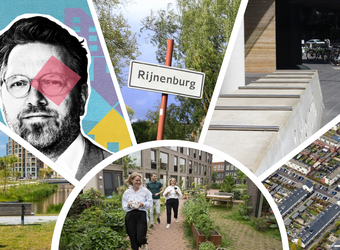Onderzoek Delta regions throughout the world are subject to increasing flood risks. For protection, regional water-safety strategies are being developed. Local-scale spatial qualities should be included in their evaluation. An experimental methodology has been developed for this purpose. This paper concentrates on water safety in The Netherlands. The Deltaprogram aims to ensure the country’s water safety until 2100. A sub-programme, Rhine Estuary–Drechtsteden, defines scenarios for water-safety interventions that use combinations of permanent or flexible, opening or closing of connections between the Dutch delta, North Sea and river systems. Cross-sections show water levels throughout the urbanised Rhine Estuary region, based on forecasts for each of the scenarios, and local-scale interventions, such as dykes or flood barriers. The interventions are rated using existing and new criteria for the evaluation of spatial quality. Dominant criteria for each area have been used to define design criteria. The choice of a solution on a regional scale is shown to have a significant impact on the spatial quality on a local scale. In particular, water-safety interventions that result in extreme water levels have a negative impact. The methodology is suitable for estimating the impact of a regional water-safety strategy on a local scale and provides valuable design criteria.
Approximately 50% of the world’s urbanised areas are located in delta regions (UN Habitat, 2006), characterised by high population numbers and a significant contribution to the economic output of regions and countries. Climate change is expected to lead to a rise in sea levels (Pachauri and Reisinger, 2007) and, as a result, an increasing risk of flooding for many delta regions. Suitable strategies need to be developed, and measures implemented; some of these may find applicability in multiple regions because of similarities between the geographies of different deltas.
The Netherlands has a long history in the development of water-safety
strategies. Government authorities and academics
actively engage in the Deltaprogram (Deltacommissie, 2008)
to analyse the impact of a rising sea level, increasing fluctuations
in river discharges and subsidence on the country. The
programme aims to provide solutions that ensure water safety
until at least 2100; water safety in this context is concerned with
limiting both the probability and consequences of flooding
(Deltacommissie, 2008).The western part of The Netherlands is
a highly urbanised region with port cities that are significantly
exposed to rising sea levels (UN Habitat, 2008). Within the
Deltaprogram, the sub-programme Rhine Estuary–Drechtsteden
(DP RD) concentrates on the port cities of Rotterdam and
Dordrecht. Located along the estuaries of the Rhine and Meuse
rivers, this region requires protection against storm surges from
the North Sea and, potentially concurrent, high water discharges
from the rivers (Deltacommissie, 2008).
In the sub-programme DP RD, water-safety interventions are defined through four extreme, large-scale strategies – so-called cornerstones (Deltacommissie Rijnmond – Drechtsteden, 2010). These are based on the basic principle that the water level in an area protected by sea and river barriers is reduced, and hence the amount of dyke reinforcements required for protection is minimised. Each of the strategies has a different impact on flooding risks in inner and outer dyke areas, fresh water supply, shipping traffic, nature and spatial quality at both regional and local scales. Until recently, the emphasis in the assessment of the strategies was on water safety, fresh water supply, nature and economic activity; little attention was paid to the concept of spatial quality, which can be summarised as a combination of three qualitative parameters: utility, attractiveness and robustness (Ruimtexmilieu.nl, 2012).
Improved spatial quality is deemed an important factor for the solution of social–economic problems (Ritsema et al., 2006); the latter frequently occur in the Rhine Estuary–Drechtsteden area, where commercial activity in old sections of its ports is in decline. The city of Rotterdam, in the centre of this vulnerable region, is preparing for urban transformation and strives to strengthen its image as a water city (Gemeente Rotterdam, 2007); improving spatial quality is an important aspect of its plans.
In a study that identifies and quantifies the (dis)advantages of the four strategies (Jeuken et al., 2011), local-scale spatial quality was determined to be an important assessment criterion. However, the effects on spatial quality are not easily quantifiable. For conceptual water-safety strategies that are defined on a national and regional scale, much uncertainty remains about suitable measures that can be taken on a local scale. A clear need for qualitative analysis of the effects on nature and spatial quality arises, and hence the need for a methodology for the analysis of spatial effects at a local scale.
Cover: ‘2015.03.02_water-safety strategies_660’
